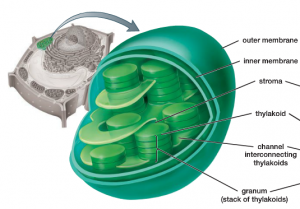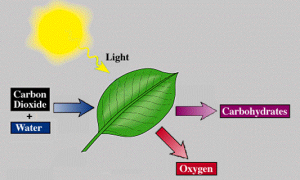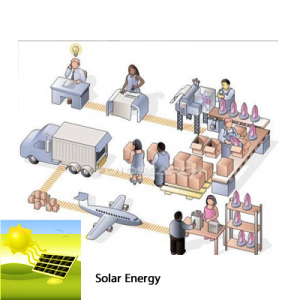Chloroplast
Introduction
Chloroplasts are organelles found only in plants and protists which are specialized at capturing energy from sunlight and converting it to chemical energy stored in glucose molecules (glucose).
Let’s take a closer look at these energy-capturing organelles now…

Chloroplast (plants and protists only)
Chloroplasts are plant (and protista)-specific organelles enclosed by a double membrane. Inside, these organelles contain a series separate, internal membrane structures arranged like stacked pancakes called grana. Each “pancake” within the grana is called a thylakoid; thylakoids are filled with a specialized green-colored pigment called chlorophyll which captures sunlight. The green color of chlorophyll accounts for the green coloration found in most plants. Enzymes present in the space surrounding the thylakoids use the captured energy, water, and carbon dioxide to produce carbohydrates.
Chloroplasts are specialized at capturing energy from sunlight and converting it to chemical energy which is then stored in sugar molecules (glucose). This chemical process is called photosynthesis. The energy in glucose is used by both plants and animals to generate ATP.
In addition to chemical energy, photosynthesis produces a critical by-product: oxygen. The oxygen that we breathe, and which many other organisms, including plants, require for life, is produced during photosynthesis.

In the manufacturing analogy, the chloroplast would represent a solar power plant, capturing sunlight energy which is converted for use within the cell.

Chloroplast (plants and protists only)
The video below discusses the structure and function of this important organelle.
Summary
Chloroplasts are plant (and protista)-specific organelles enclosed by a double membrane. Chloroplasts are specialized at capturing energy from sunlight and converting it to chemical energy which is then stored in sugar molecules (glucose) through a process called photosynthesis.
